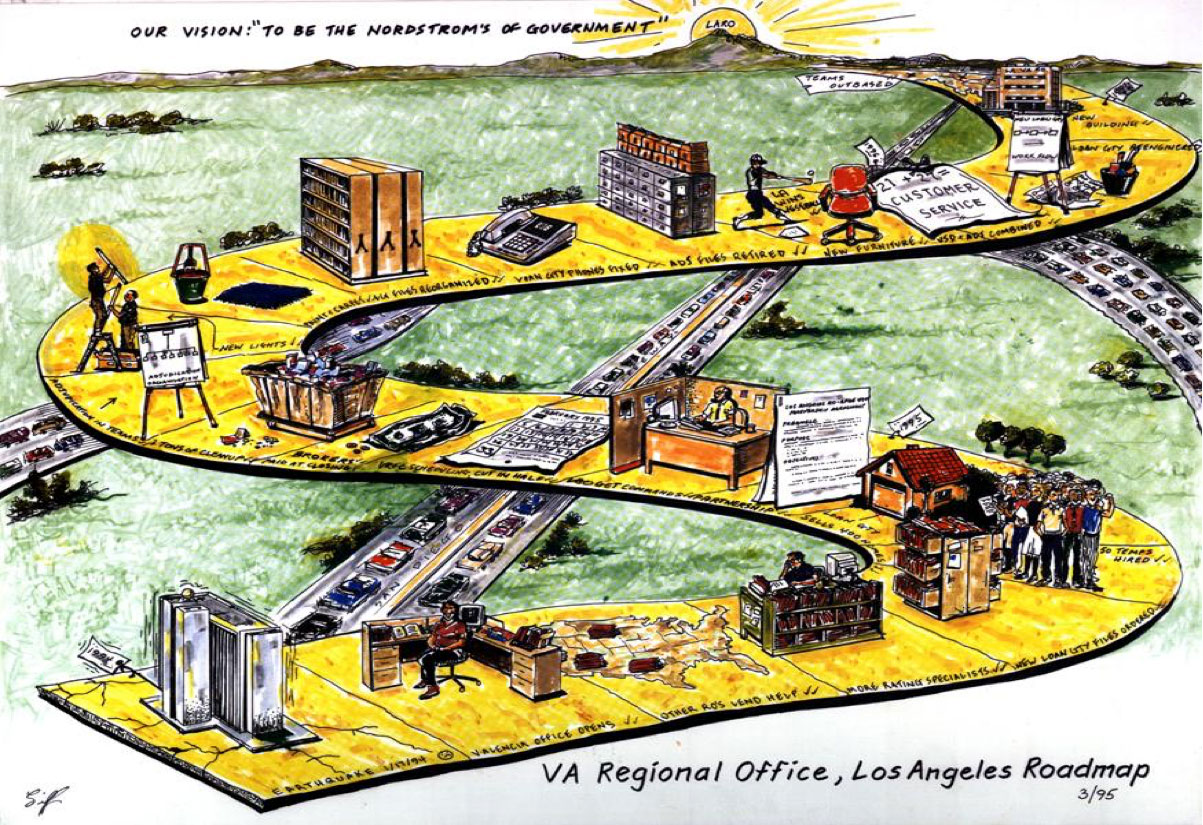
Finding a Fix for Government Performance
The Trump administration should look at time-tested management approaches.
This is the first in a series of articles on how the next administration can improve federal government operations.
As public trust in government declines, federal agencies are at a crossroads. Workforce management is part of the problem—and the solution. Agencies need to do a better job of engaging employees, developing talent and harnessing knowledge.
The transition to the Trump administration will trigger a push for new ideas to improve government performance. But there are time-tested, innovative, approaches that could transform management at every agency, if properly designed and implemented. These approaches are based on six interdependent management principles:
- Government performance
- Accountability
- Employee engagement
- Team development
- Employee development
- Rebuilding the human resources management field
Organizations are perfectly designed to get the results they do. So, if government wants to improve its results, it needs to change its design, and managers must do a better job of implementing current and future management systems.
New political appointees should work closely with career civil servants to identify and implement sound ideas that will make federal agencies the model for other levels of government, the private sector and organizations around the world. There is an old saying: If you want to know what the solutions are to your problems, turn to the people who do the work. In this case, those are the civil servants.
Any transformation effort should start with a strategy; then processes are designed around that strategy. After that, the organization’s structures and systems must be aligned to the processes. While the strategies may differ across government, each agency should follow this approach to develop a comprehensive improvement plan.
The first two areas that are ripe for improvement are performance management and accountability.
Performance Management
Government performance is a pervasive concern among citizens, Congress and, in some cases, even the agencies themselves. Performance management should be treated as an ongoing process. Agencies should have clear goals and objectives that are aligned from the headquarters level down to the field.
Agency leaders should develop a balanced scorecard that measures overall service, incorporating a series of metrics that are weighted in relation to each other (e.g., quality, unit cost, customer service, timeliness, employee development and satisfaction). Each scorecard should roll up to one overall number that represents the organization’s performance and should have a clear line of sight from the headquarters level to the individual team and, where possible, the employee.
Effective and actionable performance standards must be developed for both transactional and nontransactional positions. Each employee should receive frequent feedback–preferably on a monthly basis. Interestingly, the Federal Employee Viewpoint Survey shows performance feedback is the No. 1 driver of employee engagement.
Goals, objectives and results should be posted throughout the organization for everyone to see. Teams should meet frequently to discuss areas for improvement, resource needs and performance problems. Where appropriate, everyone’s performance should be posted (by symbol rather than by name) so no one can hide and people can learn from each other. Such peer pressure improves performance.
Rewards and recognition programs should be developed to incentivize excellence, rather than serve as disincentives–which most current programs appear to do. This means goals should be reasonable and achievable, rewards should be paid out frequently (perhaps quarterly), and they should focus on both individual and group performance.
Agencies also should use visual management to engage their employees. They can design their office space and send their message by using management principles along with the fine arts to:
- Connect employees to the mission, vision, history and their customers through visual and audio displays.
- Celebrate the great work of the employees.
- Post and share performance information from top to bottom.
- Reinforce the organization’s key messages and management systems.
- Drive performance improvement.
- Positively shape the outside world’s view of the organization.
This approach, along with other performance management strategies, can increase productivity, quality and service by 15 percent to 30 percent. Here is an example of a visual management roadmap posted in a government office:

Accountability
The public believes that the government is unwilling and/or unable to hold its employees accountable, and for good reason. The private sector, for example, fires poor employees at six times the rate the federal government does. Moreover, federal employees have the same perception. Only 29.3 percent agree with the following statement in the 2016 FEVS: “In my work unit, steps are taken to deal with a poor performer who cannot or will not improve.”
Through training, cultural change, human resources support and strong leadership, an agency can instill a common philosophy in supervisors, managers and executives that there must be reliable consequences for every level of performance and conduct.
In addition, agencies should require all levels of management to provide frequent feedback so employees always can see an action coming.
When dealing with problem employees, either you change the people or you change the people. The one thing that is not acceptable is the status quo. Employees will either choose to be a part of the organization or not.
Agencies must train managers to promptly and effectively deal with poor employees by:
- Not moving them to another position
- Developing appropriate documentation
- Bringing problems to a head quickly
- Taking a strong action
- Not being afraid
- Letting employees fight from the outside
This approach, along with the help of human resource management professionals, will push problem people out the door much more quickly, with a success rate of over 95 percent.
Managing performance in a holistic manner will undoubtedly lead to improved performance. Moreover, dealing with toxic employees upfront can create a results-driven culture and make it easier to institute wholesale changes. The next article in this series will focus on employee engagement and teamwork.
Stewart Liff is president and CEO of Stewart Liff & Associates Inc., specializing in human resources management and team development. He is the author or co-author of seven books, including Managing Government Employees, A Team of Leaders and Seeing is Believing. He can be reached at stew@stewartliff.com.
Paul Gustavson is an organizational design consultant and founder of Organization Planning & Design Inc., which helps companies around the world create and sustain high-performance teams. He is the co-author of A Team of Leaders, The Power of Living by Design and Running into the Wind. He can be reached at pgustavson@organizationdesign.com.






